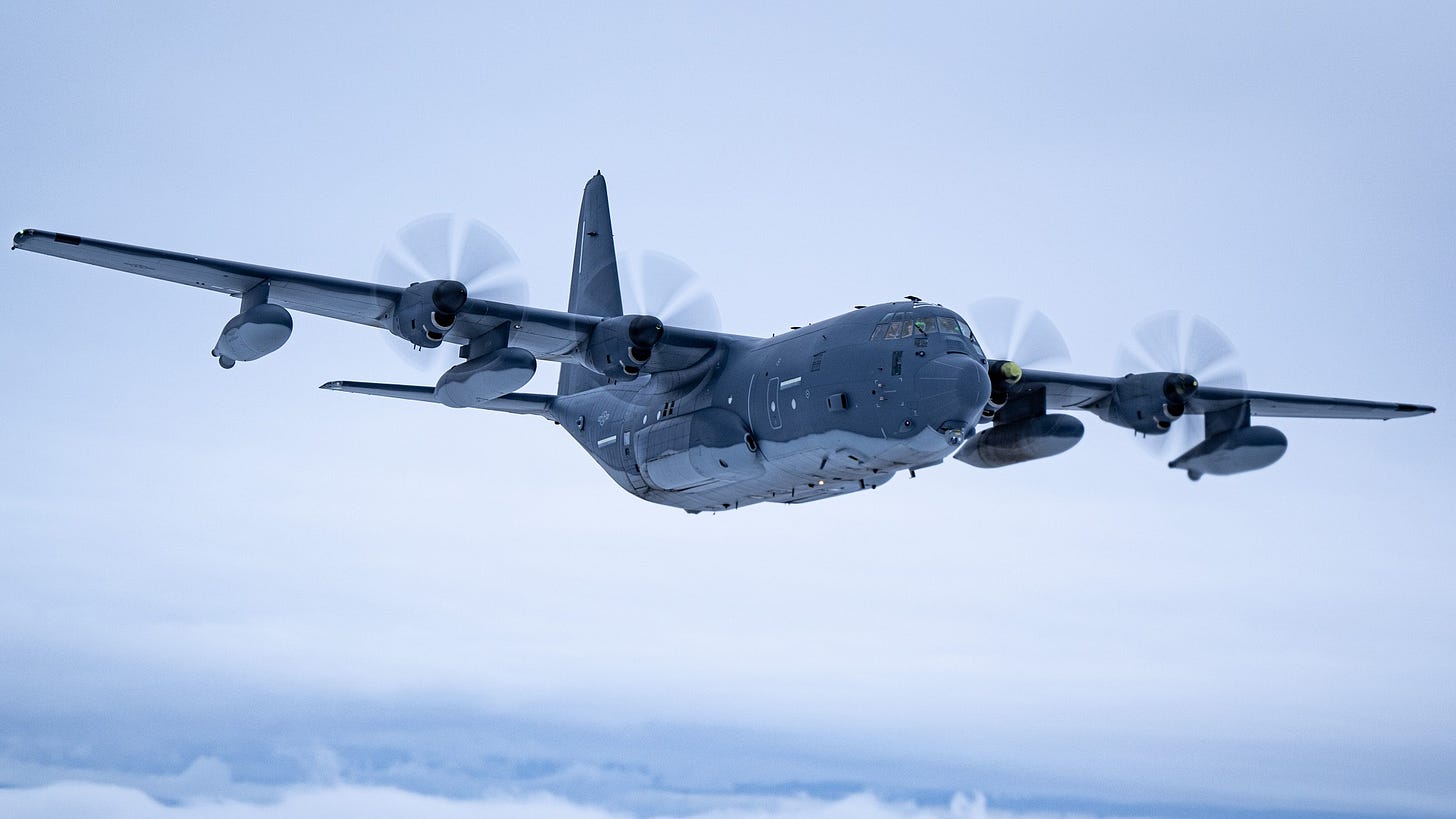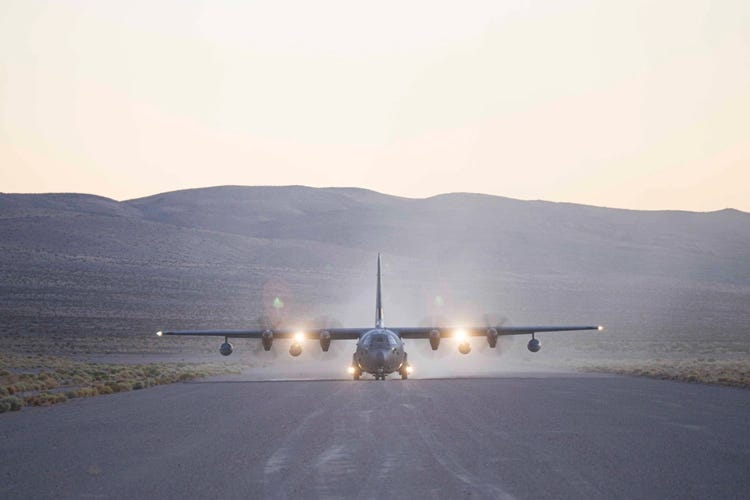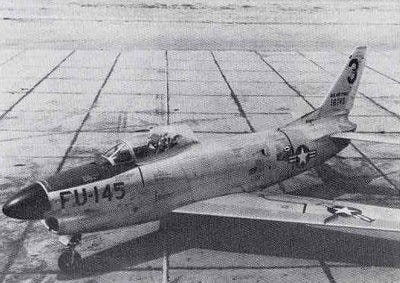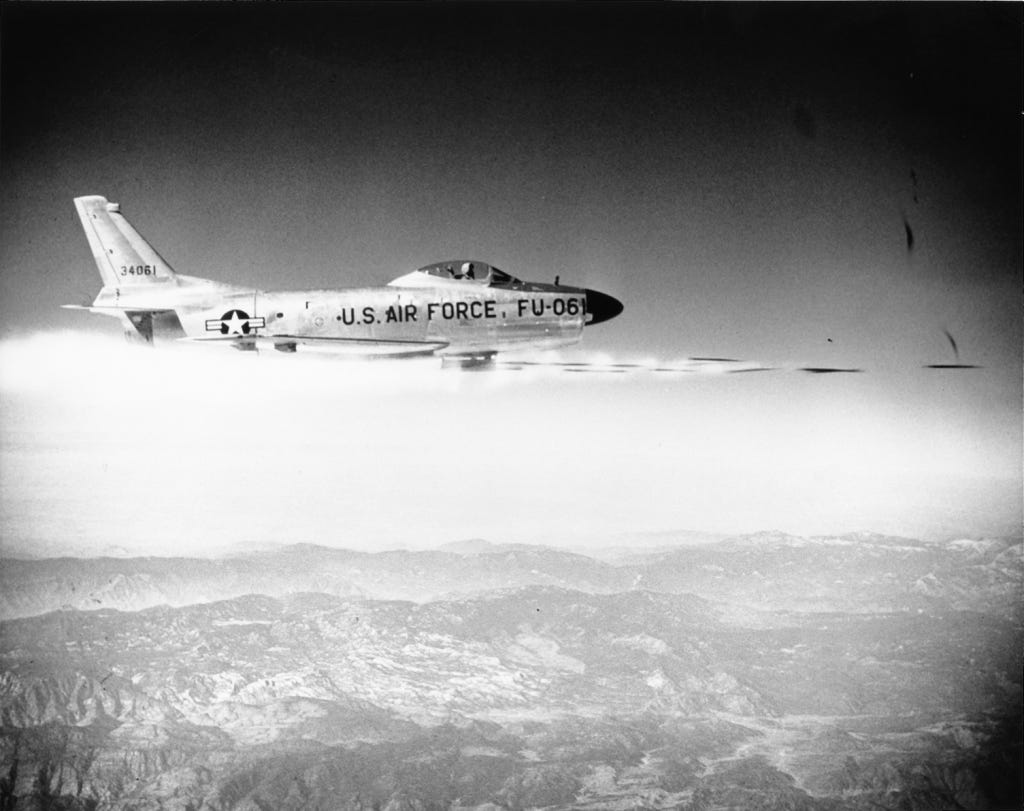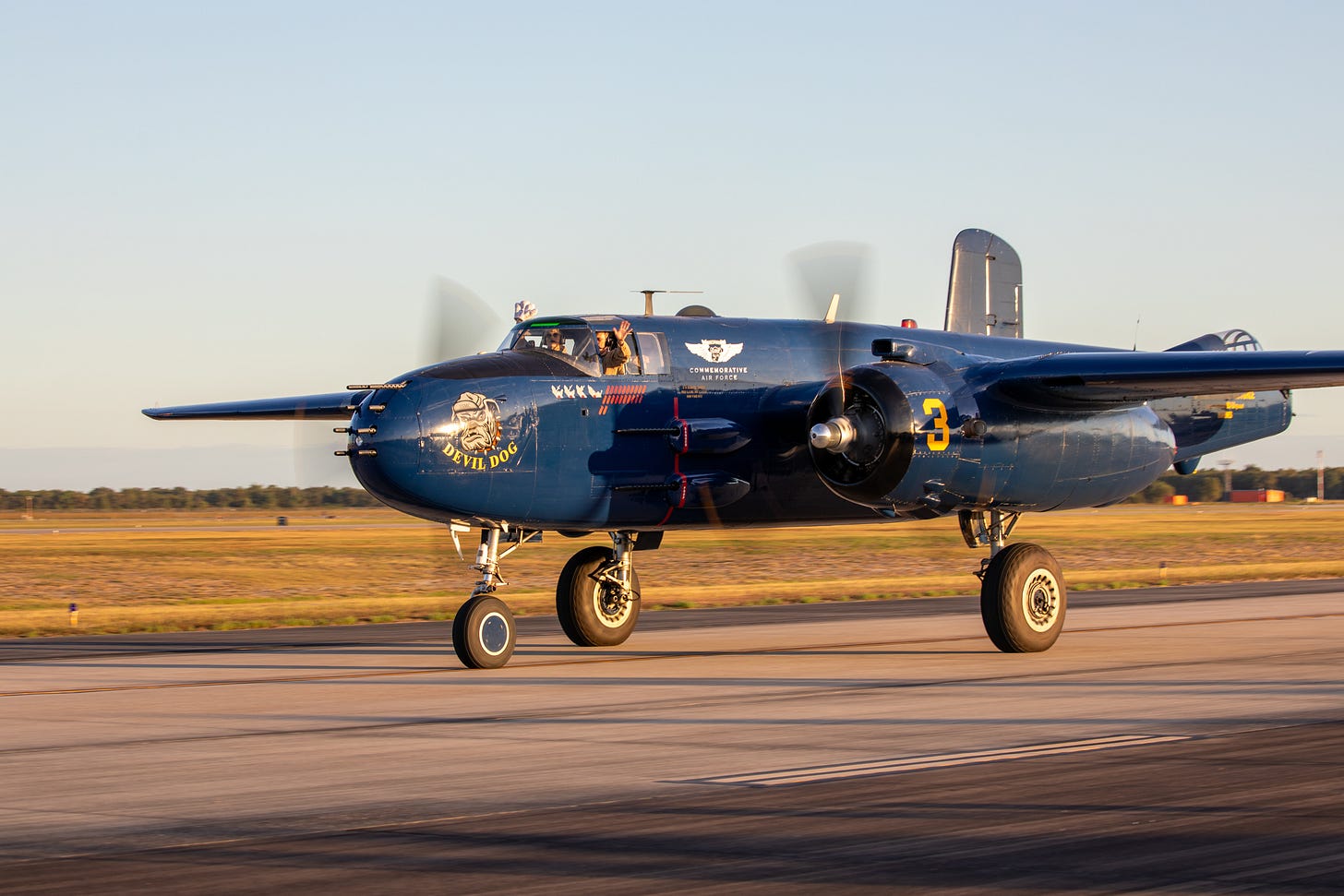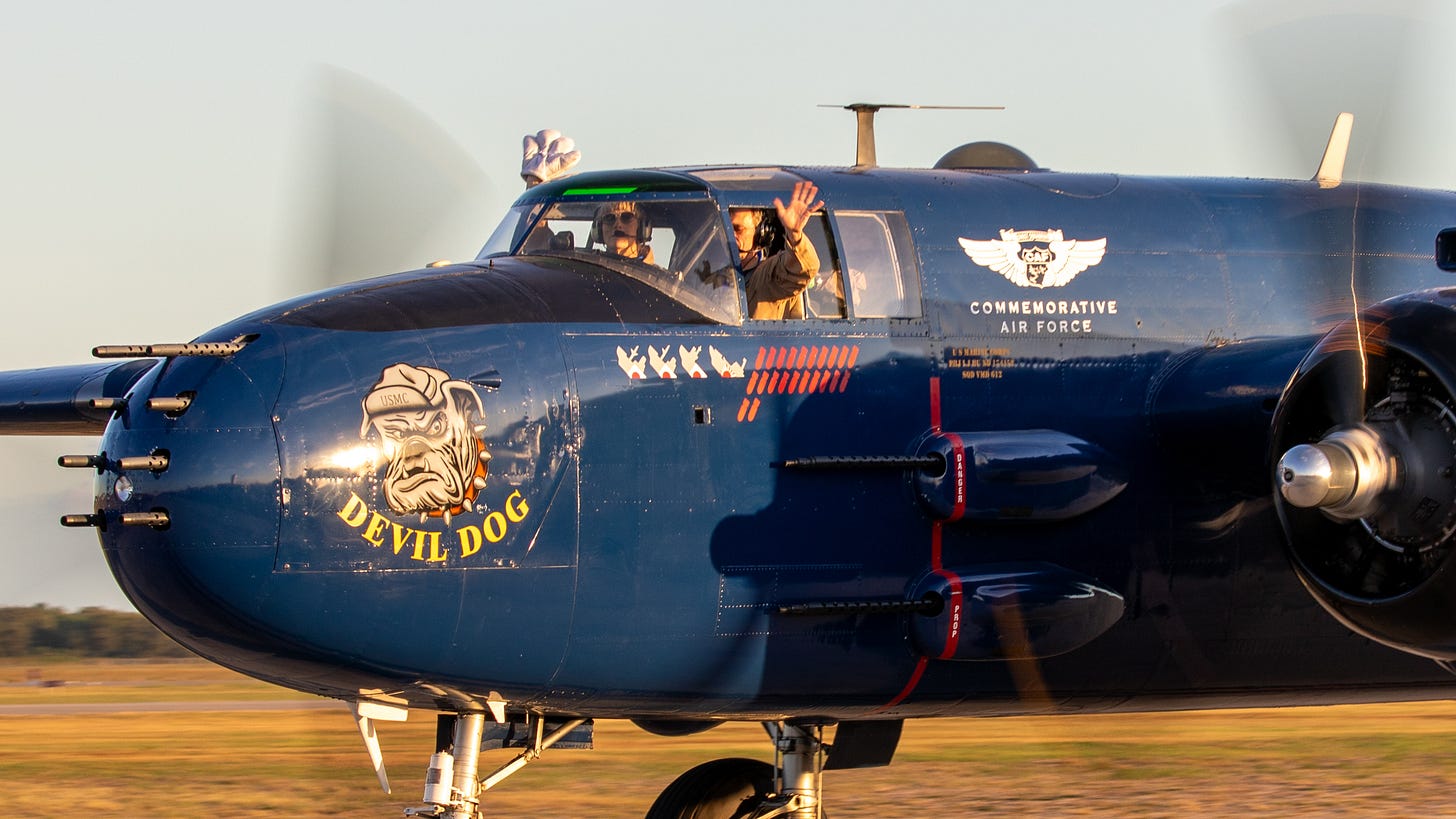From Gunships to Sabre Dogs: Pushing Limits in the Sky
From AESA radar upgrades transforming SOCOM’s C-130s to the F-86D Sabre’s 1953 speed record, this week highlights how technology keeps pushing aircraft further, faster, and smarter.
“The C-130 Hercules is the backbone of tactical airlift, capable of landing on short, unimproved runways and delivering the fight anywhere it’s needed.”
— Gen. Carlton D. Everhart II, former Commander, U.S. Air Mobility Command
Mission Briefing
SOCOM C-130s to Receive APG-83 AESA Radar Upgrade
Special Operations Command will equip its AC-130J, MC-130J, and HC-130J fleets with the Northrop Grumman AN/APG-83 Scalable Agile Beam Radar (SABR), replacing the legacy AN/APN-241 system. The Air Force Life Cycle Management Center announced the plan on August 27, 2025, covering 147 radars and associated equipment for 133 aircraft plus spares.
The decision follows more than a decade of studies and tests, including attempts with the Dragon’s Eye pod, to bring active electronically scanned array (AESA) technology to SOCOM’s Hercules fleet. The APG-83, already fielded on F-16s, will now extend its proven capabilities to the C-130 platform.
Unlike mechanically scanned radars, AESA systems offer instant beam steering, multitasking, high-resolution SAR imagery, and GMTI tracking, while resisting jamming and improving reliability. For the AC-130J gunship, this means target detection at longer ranges and in degraded weather where electro-optical sensors fail. The MC-130J stands to gain from improved navigation, surveillance, and potential roles in electronic attack or long-range communications, making it more versatile behind enemy lines. The HC-130J will benefit from enhanced situational awareness during search and rescue and refueling missions.
While the APG-83 has never been integrated on a C-130, Lockheed Martin’s long history with both the platform and the radar simplifies the process. The upgrade joins other modernization efforts, including the Silent Knight terrain-following radar, potentially transforming how SOCOM employs its C-130 fleet.
Former AFSOC commander Gen. James Slife described AESA technology as enabling “a whole host of capabilities we haven’t seen up to this point,” including electronic attack and cyber effects. Though no fielding timeline has been released, the APG-83 selection marks a major step toward making SOCOM’s C-130s more survivable and adaptable in contested environments.
I’m working on a video all about the MC-130J, stay tuned!
This Week in Aviation History
1 September 1, 1953 – F-86D Sabre Breaks the Speed Record
Captain Harold Edward Collins of the U.S. Air Force set a world speed record in a North American F-86D Sabre, flying at 707.9 miles per hour (1,139.2 km/h) over a 15-to-25 kilometer course near Vandalia, Ohio.
The F-86D, nicknamed the “Sabre Dog,” was a radical leap forward in interceptor design. Unlike its day-fighter predecessor, it was an all-weather, radar-equipped aircraft armed with twenty-four Folding-Fin Aerial Rockets carried in a retractable belly tray. Its sophisticated electronic fire-control system was so advanced for the time that F-86D pilot training was the longest of any aircraft in the Air Force inventory—even longer than that of the B-47 Stratojet bomber. More on the Stratojet later in the newsletter.
The record-setting jet was part of a series of speed breakthroughs for the type; just weeks earlier, the same airframe had set another world record at the Salton Sea. In total, more than 2,500 F-86Ds were built, with many later upgraded to the improved F-86L standard. The Sabre Dog served into the 1960s, defending U.S. skies against the looming threat of Soviet long-range bombers.
The very aircraft that carried Collins to the record books, tail number 51-6145, eventually found a new home with the Royal Hellenic Air Force of Greece—its legacy cemented as one of the fastest interceptors of its time.
Sidebar: F-86D “Sabre Dog” Specs
Manufacturer: North American Aviation
Role: All-weather interceptor
Crew: 1 (pilot)
Length: 40 ft 3 in (12.3 m)
Wingspan: 37 ft 1 in (11.3 m)
Powerplant: 1 × General Electric J47-GE-17 turbojet with afterburner, 7,500 lbs thrust
Max Speed: 707 mph (1,139 km/h) at record attempt
Ceiling: 49,750 ft (15,164 m)
Rate of Climb: 12,150 ft/min (61.7 m/s)
Range: 668 nmi (1,237 km) with tanks
Armament: 24 × 2.75 in Folding-Fin Aerial Rockets in retractable tray
Production: 2,505 built (1949–1954)
In Case You Missed It
Here is the full video on the B-47 Stratojet:
Let me know your thoughts in the comments
Photo Outlet
Every issue of Hangar Flying with Tog gets you a free image that I’ve taken at airshows:
Feel free to use these photos however you like, if you choose to tag me, I am @pilotphotog on all social platforms. Thanks!
Post Flight Debrief
Like what you’re reading? Stay in the loop by signing up below—it’s quick, easy, and always free.
This newsletter will always be free for everyone, but if you want to go further, support the mission, and unlock bonus content, consider becoming a paid subscriber.
Your support keeps this flight crew flying—and I couldn’t do it without you.
– Tog



